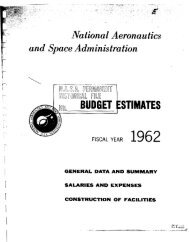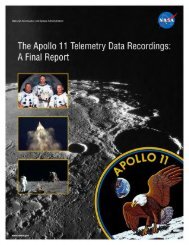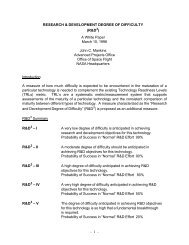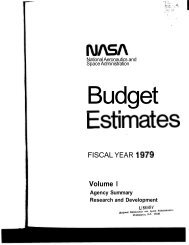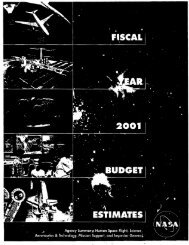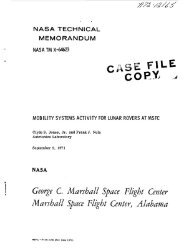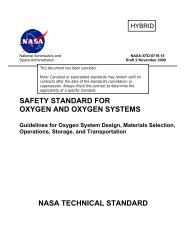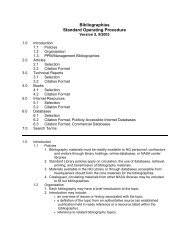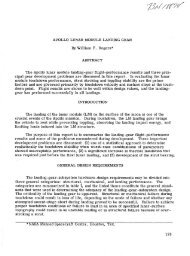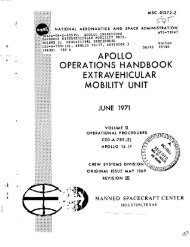crimping, interconnecting cables, harnesses, and wiring - NASA
crimping, interconnecting cables, harnesses, and wiring - NASA
crimping, interconnecting cables, harnesses, and wiring - NASA
You also want an ePaper? Increase the reach of your titles
YUMPU automatically turns print PDFs into web optimized ePapers that Google loves.
Page 70 of 114<br />
<strong>NASA</strong>-STD-8739.4 with Change 6<br />
1/ Wire shall not be pulled to a force in excess of 80 percent of the specified<br />
minimum crimp tensile requirement. This requirement shall be met to avoid damage to<br />
the wire/contact crimp joint.<br />
2/ These forces are based on wire size AWG 24. If smaller wire is used these<br />
values should be adjusted accordingly.<br />
Figure 13-1. Typical Push Test Tool<br />
Figure 13-2. Application of Retention Tool for Gripping Wire (Typical)<br />
b. Pull Testing. On terminal junctions <strong>and</strong> certain insertable crimp-contact connectors, contacts<br />
are not exposed for push testing. Pull force contact retention testing to the requirements of Table<br />
13-1 shall be performed only on devices in which the contact engaging (mating) ends are not<br />
accessible (Requirement). Pull force testing shall be performed by pulling on the wire<br />
terminated in the contact as illustrated in Figure 13-2 (Requirement). The wires to be pulled<br />
(except for shielded wire) shall be free of ties, cable clamps, or any wire-harness shielding<br />
devices within 127 mm (5 inches) of the terminal junction sealing grommet surface (see Figure<br />
13-2) (Requirement). When the wire breakout to the terminal junction is less than 127 mm (5



